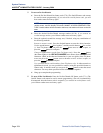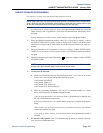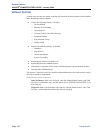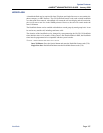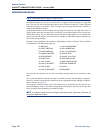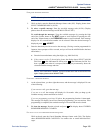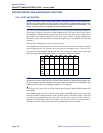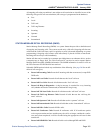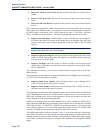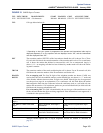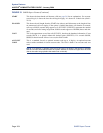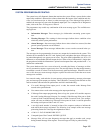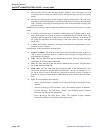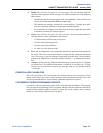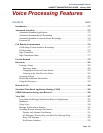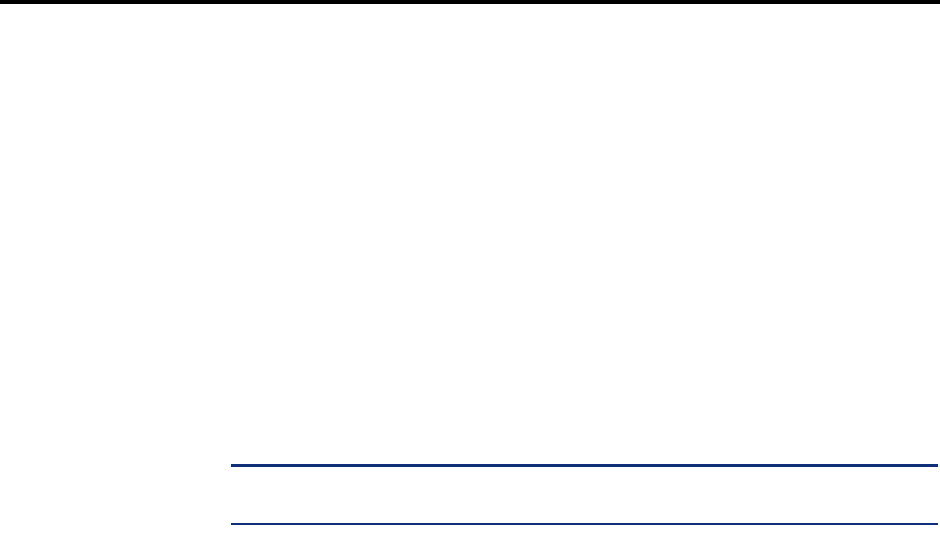
Page 262
System Features
AXXESS
®
ADMINISTRATOR’S GUIDE – January 2004
Station Message Detail Recording (SMDR)
• Record All Trunk To Trunk Calls: Records all calls made from one outside caller to
another.
• Record All Network Calls: Records all calls placed to and received from network
nodes.
• Record All Off-Node Devices: Records all calls placed to and received from off-node
devices.
The programmer can determine whether absorbed digits, equal access digits, and/or toll field
digits appear in the SMDR printout. As an example, assume the following number was dialed:
89 (other system’s trunk access code) - 10288 (equal access code) - 1 (toll field) - 602 (area
code) - 961-9000 (seven-digit number). The following programming options can be used:
• Suppress Absorbed Digits: Absorbed digits (on local or PBX lines) will not appear in
the report if this option is selected. In the sample above, the absorbed digits (the other
system’s trunk access code) would be suppressed so that only 10288- 1-602-961-9000
appears.
NOTE: If absorbed digits are repeatable on a local line, the absorbed digits will not
appear in the SMDR report even when repeated.
• Suppress Equal Access Digits: Equal access digits will not appear in the report if this
option is selected. In the sample above, the equal access code field would be suppressed
to print only 89-1-602-961- 9000.
• Suppress Toll Digits: When this option is selected, toll digits will not appear in the
report. In the sample above, the toll field would be suppressed so that only 89-10288-
602-961-9000 prints.
Any combination of the above can be used. If all three fields are suppressed, only 602-961-
9000 will print.
The programmer can also suppress or allow call information in the SMDR report “Dialed Dig-
its” field. The following options are available:
• Suppress Outside Party Number: Caller information that is received through ANI or
Caller ID will not appear if this option is selected.
• Suppress Trunk Number: Information received through DID or DNIS will not be
included in the report if this option is selected.
The programmer can determine which equipped station(s) and/or trunks will be included in the
report, and whether off-node devices will be included in reports. However, for incoming calls,
DISA calls, conference calls, and/or ring-in diagnostics, all calls are recorded even when they
involve stations not in the programmed station list.
SMDR can be programmed to record the elapsed time of calls in seconds (S=XXXXXX) or
hours and minutes (HH:MM). If programmed to record elapsed time in seconds, the ELAPSED
TIME field will show “S=XXXXXX” (XXXXXX represents the number of seconds) for calls
up to 999999 seconds long. For calls lasting longer than 999999 seconds, ELAPSED TIME
will show “HH:MM” (hours and minutes rounded up to the nearest minute).
The SMDR output report is printed as shown in Figure 12 on the following page. A page head-
ing (with the day of the week, date, month, year and column headings) is generated just after
midnight to show the change in date. A header is also printed after output from another system
source (alarm, informative message, etc.), using the same output device, interrupted the SMDR
output.



